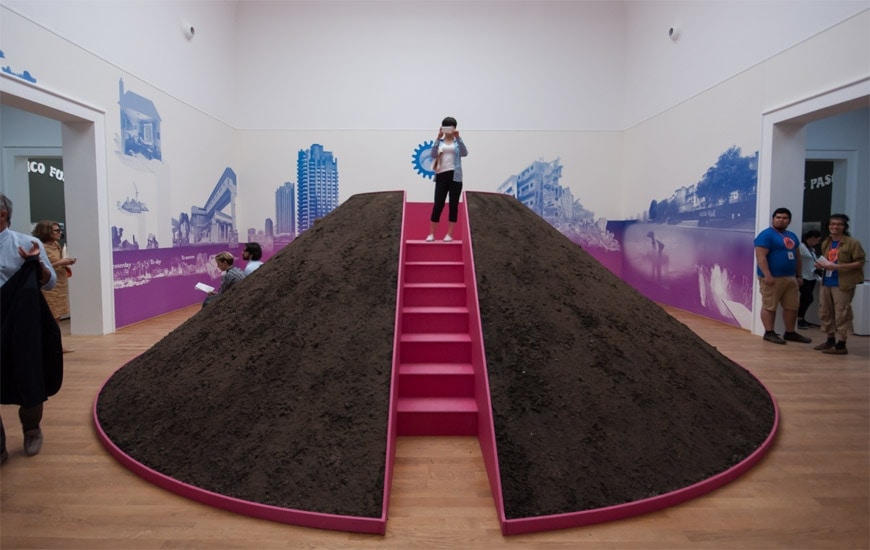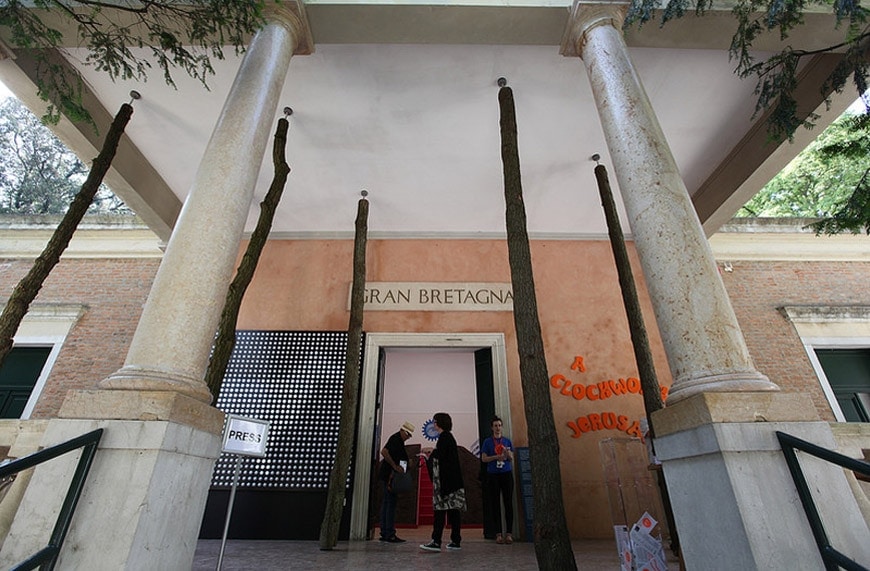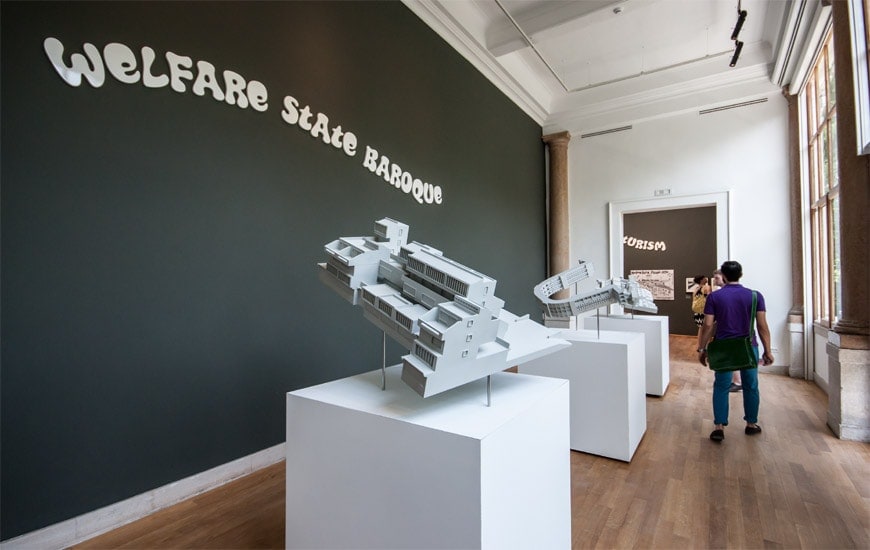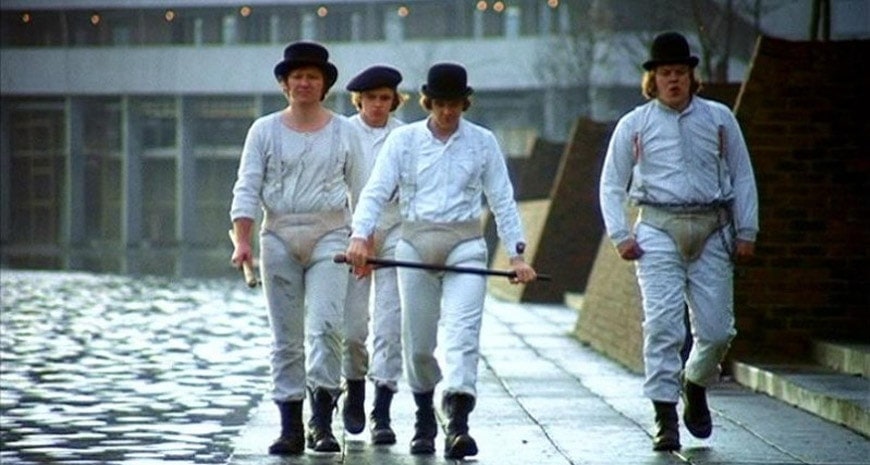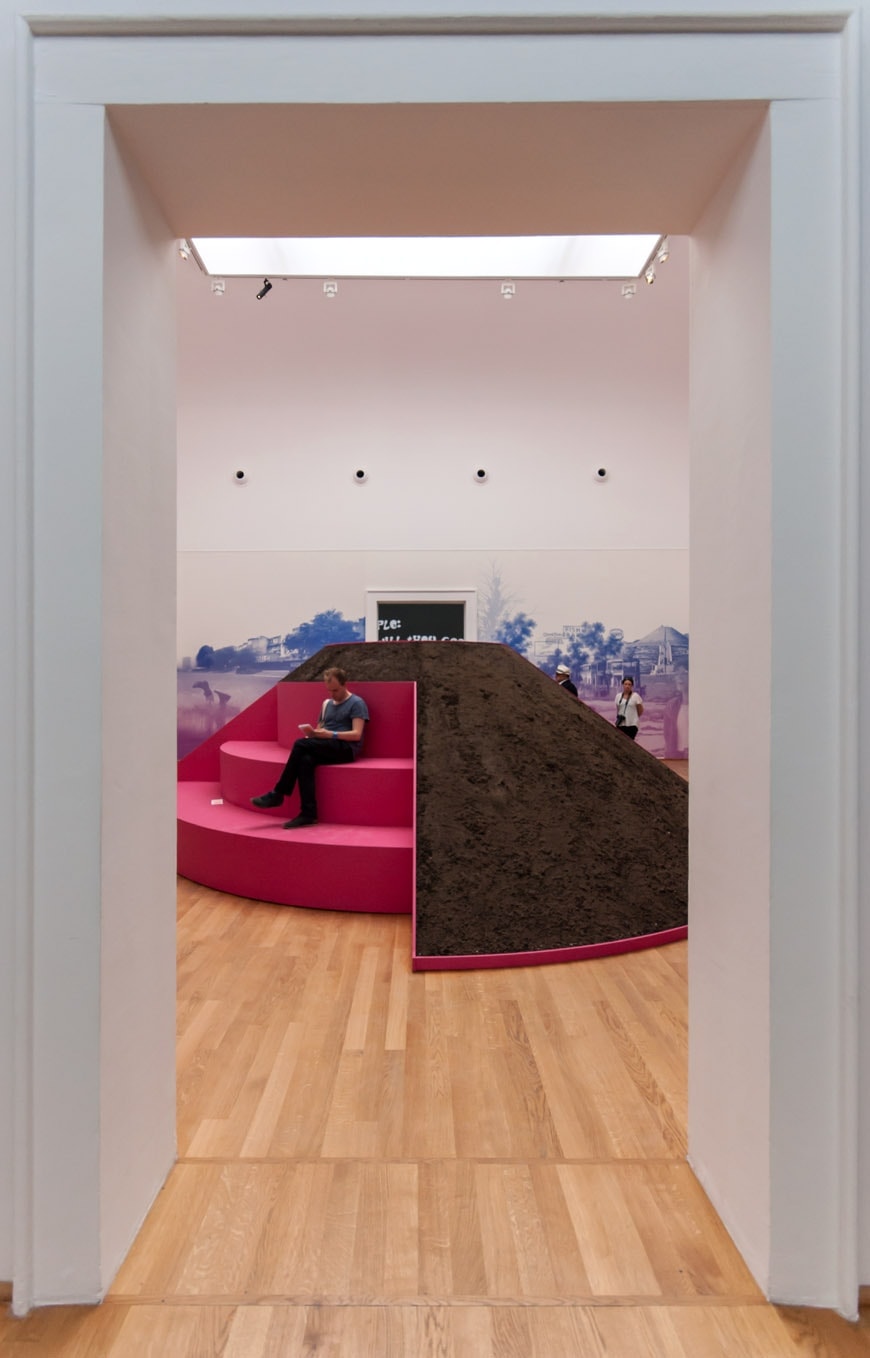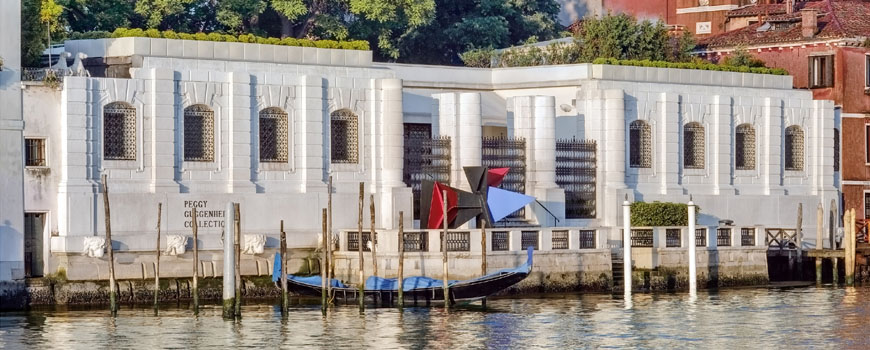British pavilion | 14th Architecture Biennale
Concept, Curation and Exhibition design: FAT Architecture and Crimson Architectural Historians
Graphic Design: Fraser Muggeridge Studio
Photos by Riccardo Bianchini, Inexhibit
Additional photo by Bruno Cordioli
A Clockwork Jerusalem
The British Pavilion
The British pavilion deals with the theme of the 14th Architecture Biennale by depicting how, from the Industrial Revolution onward, modernity has been incorporated into the British culture and its literary and artistic utopias: from William Blake’s Jerusalem, a symbol of redemption and rebirth, to the celebration of ruins; from the passion for the picturesque and the landscape to the Arts and Crafts movement; from the Garden Cities of Ebenezer Howard to the post-war New Towns; and in which way such union became part of the British popular culture.
Photo by Bruno Cordioli
A frame from “A Clockwork Orange” by Stanley Kubrick (1971), which was based on a novel by Anthony Burgess. For the exhibition curators, the selection by Kubrick of the Thamesmead development in South East London as a filming location was not intended to express a dystopia but rather a picturesque-futuristic vision of the new city.
Some of the section title signboards within the British pavilion
Absorbing Modernity 1914-2014
Absorbing Modernity 1914-2014 is an invitation to the national pavilions to show, each in their own way, the process of the erasure of national characteristics in architecture in favor of the almost universal adoption of a single modern language and a single repertoire of typologies – a more complex process than we typically recognize, involving significant encounters between cultures, technical inventions, and hidden ways of remaining “national”.
copyright Inexhibit 2025 - ISSN: 2283-5474

